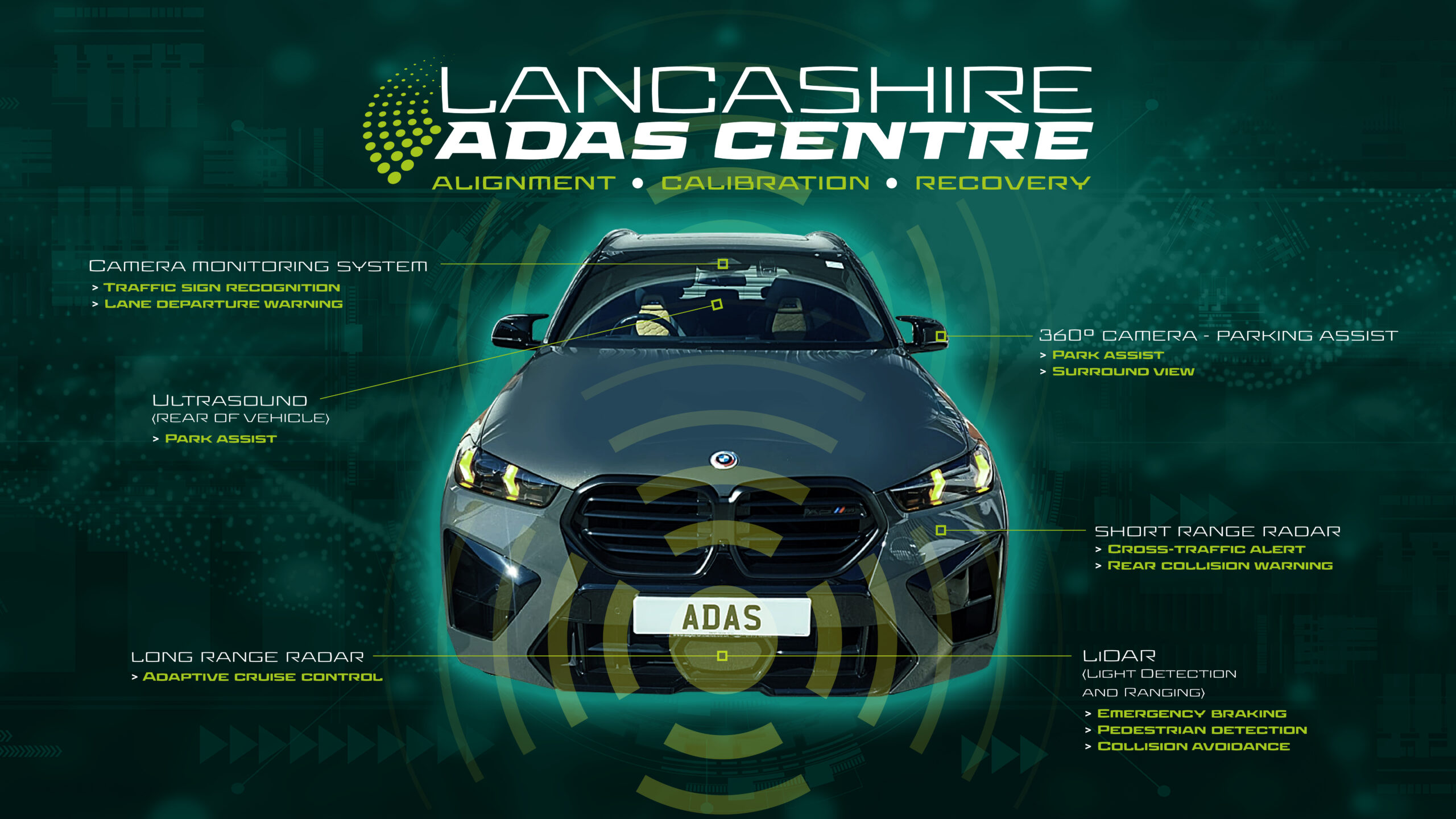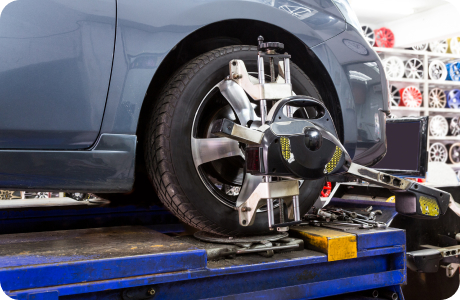
Lancashire ADAS
Advanced Driver Assistance Systems (ADAS) bring exciting advancements to automotive technology, making driving safer and more convenient. These smart features are designed to help prevent accidents or minimize their impact by keeping an eye on the surroundings, such as nearby cars, pedestrians, and obstacles.

What is ADAS?
Advanced Driver-Assistance Systems (ADAS) are smart technologies designed to make driving safer and more convenient for you. By using tools like sensors and cameras, ADAS can detect obstacles or potential driving mistakes and step in to help when needed. These features work through a simple human-machine interface, enhancing road safety and making driving less stressful. ADAS can even support different levels of autonomous driving.
Since many road accidents happen because of human error, ADAS was created to make vehicles smarter, safer, and more reliable. These systems are proven to reduce accidents by minimising mistakes, with features that alert drivers to potential issues, provide safety measures, and even take control of the car if necessary. Some of the handy features ADAS offers include adaptive cruise control, collision avoidance, lane departure warnings, lane centring, satellite navigation, traffic alerts, and even automated lighting. By 2030, it’s predicted that half of all cars on the road will have these smart safety features!

Benefits of ADAS
First and foremost, ADAS is like having a co-pilot that helps make driving much safer by reducing the chances of human error—one of the main causes of road accidents. These smart systems alert you to potential dangers and can even take over in critical moments to keep you safe. On top of that, ADAS makes driving more convenient, whether it’s helping on long trips or making your daily commute smoother and stress-free.
Common Types of ADAS Technology
You'll find many types of ADAS technology in modern cars to help make driving safer.
Forward Collision Warning (FCW)
Alerts the driver to an imminent collision with a vehicle or obstacle ahead, providing valuable time to react and avoid potential accidents.
Lane Departure Warning (LDW)
Monitors lane markings and alerts the driver if the vehicle begins to drift out of its lane without signalling, helping to prevent unintended lane changes and collisions.
Automatic Emergency Braking (AEB)
Detects potential collisions and automatically applies the brakes if the driver fails to respond in time, reducing the severity of crashes or avoiding them altogether.
Adaptive Cruise Control (ACC)
Automatically adjusts the vehicle’s speed to maintain a safe distance from the car ahead, facilitating a more comfortable and less strenuous driving experience, especially on long journeys.
ADAS combines these innovative technologies to make driving safer, reduce the hassle of busy roads, and create a more effortless, intuitive experience for drivers.
The Importance of ADAS Calibration
ADAS calibration is a carefully tuned process that keeps the sensors and cameras of an Advanced Driver Assistance System working flawlessly. These “eyes and ears” of ADAS need to be perfectly aligned to accurately understand the surroundings and respond effectively.
Calibration and Recalibration: Keeping Safety in Check
When a vehicle is repaired — especially after incidents that involve replacing parts like windshields or bumpers — ADAS sensors may become misaligned. Calibration ensures everything is set back to factory specifications, allowing the system to provide accurate and reliable data for safety features. Recalibration is especially important after physical changes to the vehicle to restore the precision and functionality of these vital components.
Meeting OEM Standards
ADAS calibration must follow strict OEM standards to ensure every sensor is perfectly positioned and adjusted for accurate readings. This precision is crucial for safety features to work as intended. Even a slight misalignment can affect the system's performance, making accurate calibration essential for reliability and safety.
Other services we offer

Recovery
We can recover customer cars involved in accidents. Using a vehicle transporter, we can collect unroadworthy cars from accidents.

Wheel Alignment
We offer a 4-wheel alignment service to ensure your vehicle’s wheels are perfectly aligned.
Wheel alignment, also known as tracking, is a routine maintenance task that adjusts the angles of your wheels to match the car manufacturer’s specifications. This helps reduce tire wear and ensures your car drives straight and true, without pulling to one side.
In some cases, alignment angles can be adjusted beyond factory settings to achieve specific handling characteristics. This is especially useful for motorsport or off-road driving, where custom angles may enhance performance for unique conditions.

